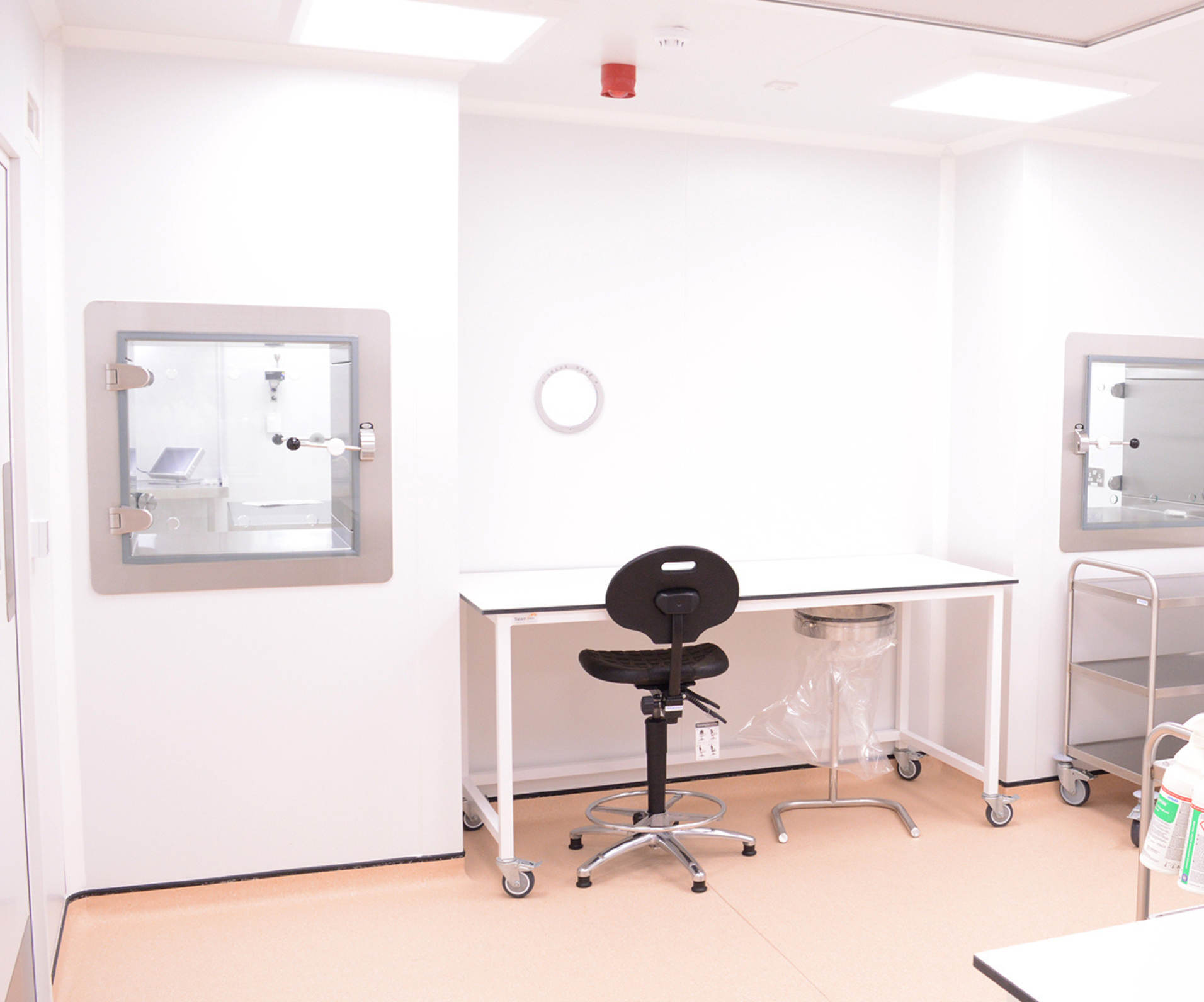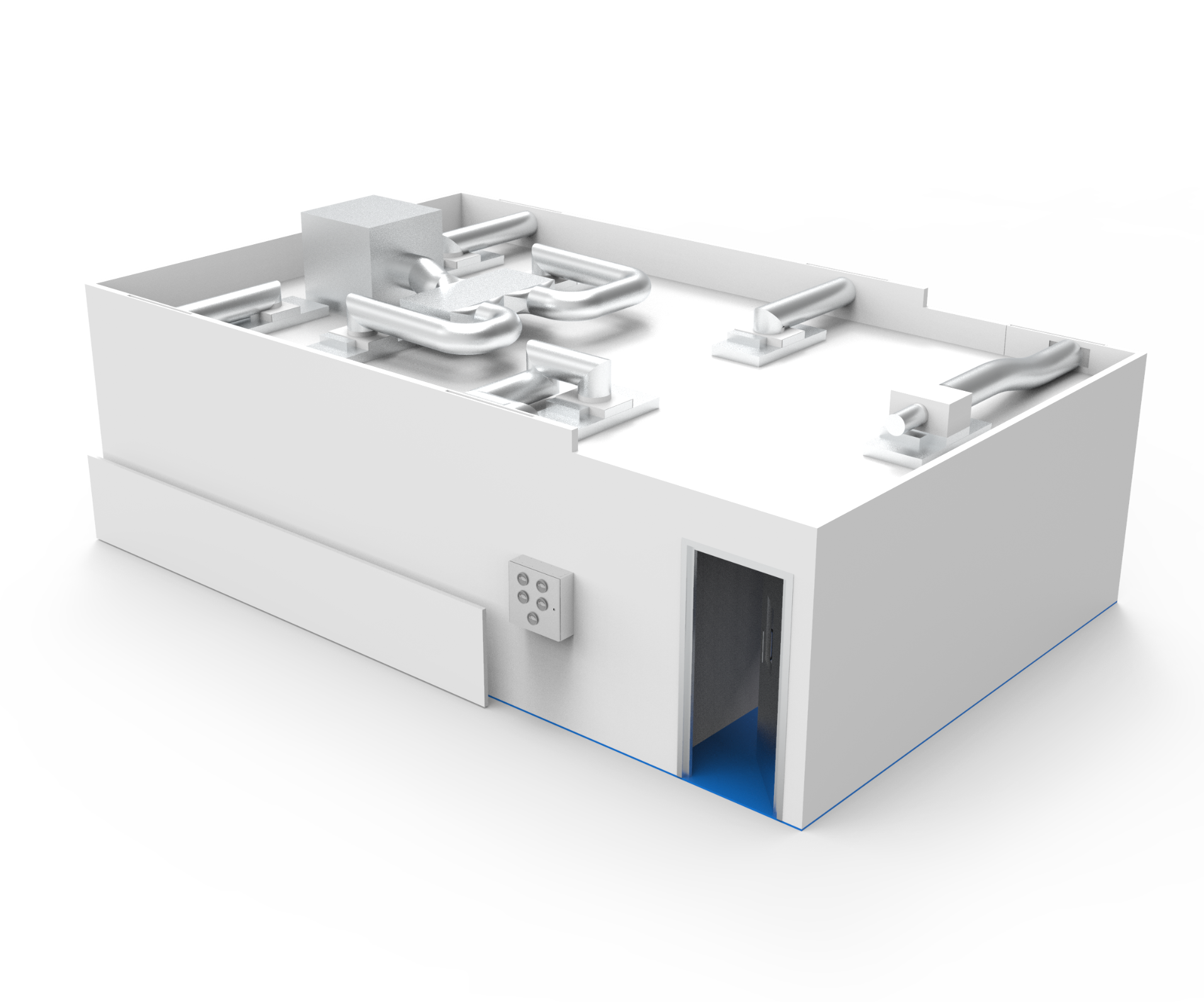GMP Annex 1 Cleanroom Product Transfer, Cleaning, and Gowning

Rotational cleaning
EU GMP Annex 1 states that for disinfection to be effective, prior cleaning to remove surface contamination should be performed. Cleaning programmes should also be designed to effectively remove disinfectant residues. More than one type of disinfecting agent with different modes of action should be used for maximum effectiveness against bacteria and fungi. The periodic use of a sporicidal agent is also endorsed.
A back up disinfectant may be required in case of a build-up in resistance to other agents.
Microbial monitoring will detect any change to the room that may occur due to resistance to cleaning agent.
Some materials used in your cleanroom may not be resistant to certain cleaning agents and could corrode, rust, or become damaged by cleaning and disinfecting chemicals. For example, hydrogen peroxide is an aggressive disinfectant so is a prime example of a product that is not always suitable for all work surfaces.
Trend analysis of contamination in your cleanroom will determine and track the efficacy of disinfectants.
Download the guide to selecting the right agents for rotational cleaning
Furniture selection
A piece of furniture may be suitable for use in one GMP cleanroom, but not another. Why? Furniture must be suitable for use with the cleaning agents and contact times detailed in your standard operating procedure (SOP).
A technical datasheet will detail resistance to specific chemicals and the product’s suitability for use with potentially corrosive cleaning chemicals. Likewise, each cleaning agent will have a material safety datasheet (MSDS) with recommended contact times.
Cleanroomshop can provide a technical datasheet and an MSDS before you purchase, so you can verify products are compatible with each other and with your SOPs.
Sterile Products
Cleaning agents and gowning materials for use in Grade A/B areas—such as gloves and suits—must be sterile. Although the use of sterile materials is not mandated in Grade C/D areas, sterile products will reduce contamination risks in these areas.
Proof of sterility must be available. Cleanroomshop can support by confirming what is available and providing the right documentation.
A certificate of analysis / certificate of assurance (COA) is provided by the manufacturer to confirm that a product (e.g. cleaning agent/chemicals) is consistently produced to the same specification, and a sample of the batch/lot number is tested and the results recorded on the COA. A certificate of irradiation (COI) is provided to evidence sterility of the product. Cleanroomshop can supply COAs and COIs on applicable products.
SHOP STERILE CLEANING PRODUCTS SHOP STERILE CLOTHING & GLOVES
Product transfer
Double or triple bagged cleaning agents or wipes allows you to remove a layer of packaging as the material moves into a cleaner area. The more layers the better for higher grade GMP areas! This reduces the risk of contaminant transferring through multiple areas of the facility. But don’t overdo it as the cost increases as the number of layers of packaging increases.
Download the guide to materials transfer for GMP cleanrooms
Gowning
Grade B (incl. access /interventions into grade A)
Appropriate garments that are dedicated for use under a sterilized suit should be worn before gowning. Appropriately sterilised non-powdered rubber or plastic gloves should be worn while donning the sterile garments. Sterile headgear should enclose all hair (including facial hair) and where separate from the rest of the gown, it should be tucked into the neck of the sterile suit. A sterile facemask and sterile eye coverings (e.g. goggles should be worn to cover and enclose all facial skin and prevent shedding of droplets and particles. Appropriate sterilised footwear (e.g. overboots) should be worn. Trouser legs should be tucked inside. Garment sleeves should be tucked into a second pair of sterile gloves worn over the pair worn while donning the gown.
This use of two pairs of gloves is new guidance but is already common practice for some organisations. Two pairs of the same model of sterile gloves can be used, but some people prefer the second pair to be half a size larger.
Every operator entering grade B or A areas should gown into clean, sterilised protective garments (including eye coverings and masks) of an appropriate size at each entry. You will need to consider different sized garments for different operators.
Grade C
Hair, beards and moustaches should be covered. A single or two-piece trouser suit gathered at the wrists and with high neck and appropriately disinfected shoes or overshoes should be worn. They should minimize the shedding of fibres and particles.
Single or two-piece facility trouser suits, covering the full length of the arms and the legs, and facility socks covering the feet, should be worn before entry to change rooms for grades B and C.
Grade D
Hair, beards and moustaches should be covered. A general protective suit and appropriately disinfected shoes or overshoes should be worn. Appropriate measures should be taken to avoid any ingress of contaminants from outside the clean area.
Additional gowning including gloves and facemask may be required in grade C and D areas when performing activities considered to be a contamination risk as defined by the CCS.
To talk to us about your GMP purchasing requirements, contact us today.


TALK TO US ABOUT A NEW GMP CLEANROOM PROJECT
Our design and build specialists have experience working with customers in all kinds of industries on a global scale, achieving great results time and time again. We’d love to work with you as well!
REQUEST A QUOTE